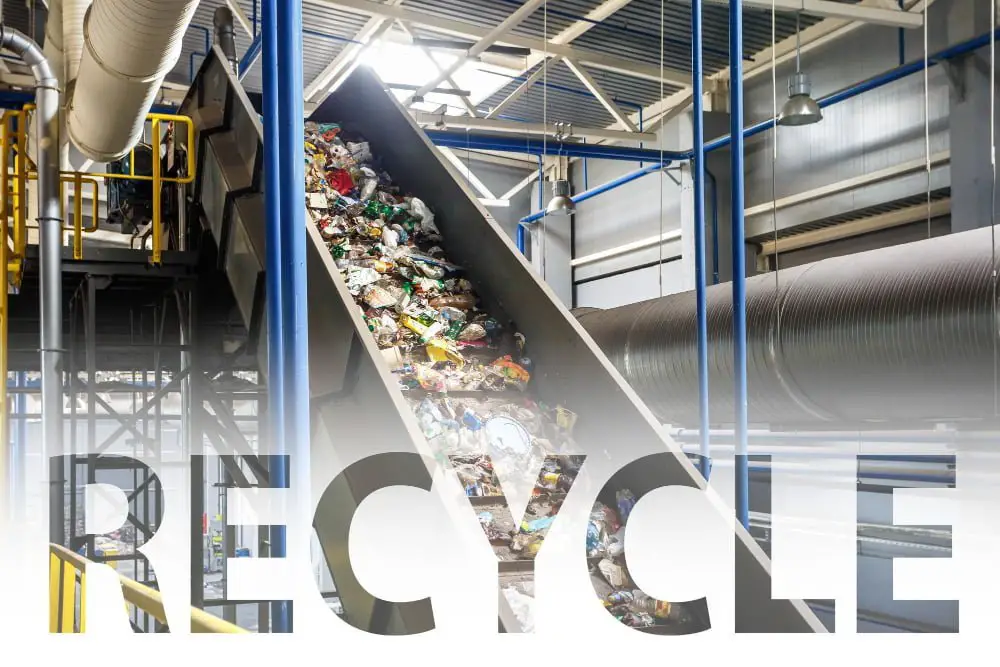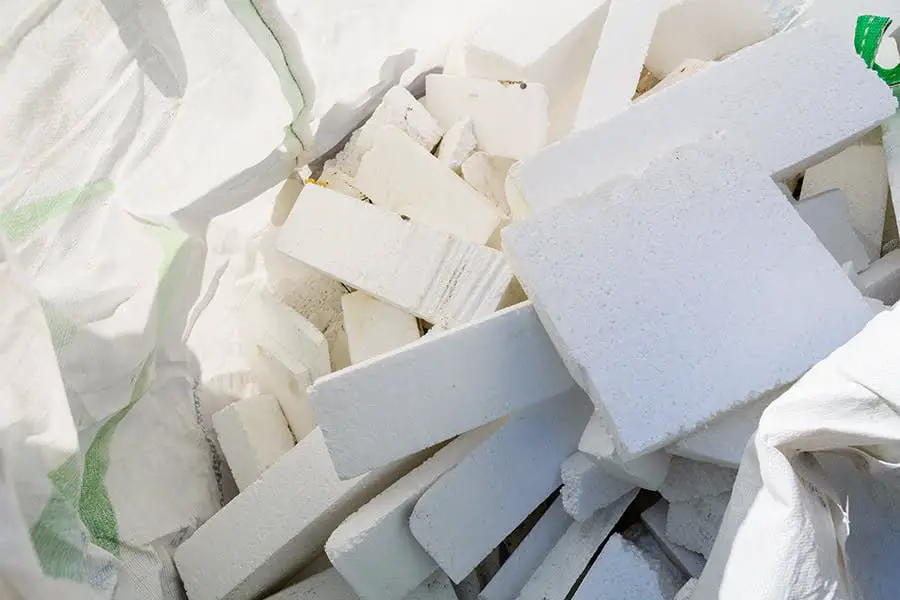Discover how recycled polymer composites are revolutionizing the construction industry with a circular economy approach to sustainable materials, all explained in simple terms.
At first glance, recycled polymer composites may not seem all that exciting. After all, they’re just made from plastic waste that’s been melted down and reformed into something new.
But when you start to dig deeper into their potential applications in construction, it becomes clear that recycled polymer composites are anything but boring.
In this blog post, we’ll explore how these innovative materials are helping us move towards a circular economy approach to construction materials innovation – one where waste is minimized and resources are used more efficiently.
From reducing carbon emissions to improving durability and aesthetics of our buildings – there’s so much to discover about this exciting new trend in sustainable construction!
Circular Economy in Construction

Circular economy is a concept that has been gaining traction in recent years, and for good reason. It’s an approach to resource management that aims to minimize waste and maximize the use of resources by keeping them in circulation for as long as possible.
In other words, it’s about creating a closed-loop system where materials are reused or repurposed instead of being discarded after their initial use.
In the construction industry, circular economy principles can be applied through various means such as designing buildings with recyclable materials or using recycled products like concrete aggregates made from crushed glass bottles. However, one area where we’re seeing significant progress is with recycled polymer composites.
These composites are made from plastic waste that would otherwise end up in landfills or oceans – so they’re already contributing to reducing waste levels significantly. But what makes them truly innovative is how they can be used again and again without losing their quality over time.
By incorporating these sustainable materials into our building designs, we can create structures that not only reduce carbon emissions but also have longer lifespans than traditional ones – ultimately leading us towards a more sustainable future for generations to come!
Recycled Polymer Composites

Recycled polymer composites are a relatively new material in the construction industry, but they’re already making waves. These composites are made by melting down plastic waste and combining it with other materials to create a strong, durable product that can be used for everything from decking to cladding.
One of the most exciting things about recycled polymer composites is their potential to help us move towards a circular economy approach to construction materials innovation. In this model, waste is minimized and resources are used more efficiently – something that’s desperately needed in an industry known for its high levels of resource consumption.
But what exactly makes recycled polymer composites so special? For starters, they have some impressive environmental credentials. By using plastic waste as a raw material instead of virgin plastics or traditional building materials like wood or concrete, we’re reducing our reliance on fossil fuels and cutting carbon emissions.
Recycled polymer composites also have some practical benefits over traditional building materials. They’re incredibly durable – resistant to rotting, warping and insect damage – which means they last longer than many other options available today.
And because these composite products can be molded into almost any shape or size required by architects’ designs while maintaining their strength properties; there’s no limit on creativity when designing buildings with them!
Innovative Construction Materials

Innovative construction materials have the potential to revolutionize the way we build our homes and buildings. From reducing carbon emissions to improving durability, these materials offer a range of benefits that traditional building materials simply can’t match.
And one material that’s been making waves in recent years is recycled polymer composites.
As I mentioned earlier, recycled polymer composites are made from plastic waste that’s been melted down and reformed into something new. But what makes them so innovative is their versatility – they can be used for everything from decking and fencing to cladding and roofing.
But it’s not just their versatility that sets them apart – it’s also their sustainability credentials. By using plastic waste as a raw material, we’re able to reduce the amount of waste going into landfills or ending up in our oceans.
And because these composites are durable and long-lasting, they help us move towards a circular economy approach where resources are used more efficiently.
So if you’re looking for an innovative construction material with both environmental benefits and practical applications, look no further than recycled polymer composites!
Sustainability and Recycling

Sustainability and recycling are two buzzwords that have been gaining traction in the construction industry over the past few years. As we become more aware of our impact on the environment, it’s becoming increasingly important to find ways to reduce waste and use resources more efficiently.
This is where recycled polymer composites come in. By using plastic waste as a raw material, these composites help divert materials from landfills while also reducing our reliance on virgin materials like wood or concrete.
This not only helps us move towards a circular economy approach but also reduces carbon emissions associated with traditional manufacturing processes.
But sustainability isn’t just about reducing waste – it’s also about creating products that last longer and require less maintenance over time. Recycled polymer composites offer several advantages in this regard: they’re resistant to moisture, insects, rotting, warping or cracking which makes them ideal for outdoor applications such as decking or fencing.
Moreover, these innovative materials can be molded into various shapes and sizes making them versatile enough for different architectural designs without compromising their durability. In conclusion; recycled polymer composite is an excellent example of how innovation can lead us towards sustainable development by minimizing environmental impacts while providing durable solutions for modern-day construction needs.
Waste Reduction Strategies

Recycled polymer composites are a key player in the move towards a circular economy approach to construction materials innovation. One of the main benefits of these materials is their ability to reduce waste and minimize our impact on the environment.
Traditionally, construction has been a wasteful industry – with large amounts of material ending up in landfills at every stage of building projects. But by using recycled polymer composites instead, we can divert plastic waste from landfills and give it new life as durable building materials.
This not only reduces our reliance on virgin resources but also helps us tackle one of today’s most pressing environmental challenges: plastic pollution. By repurposing discarded plastics into useful products like composite decking or fencing panels, we’re keeping them out of oceans and waterways where they can harm wildlife and ecosystems.
But that’s not all – recycling polymers also requires less energy than producing new ones from scratch. This means fewer greenhouse gas emissions associated with manufacturing processes – another win for sustainability!
In short: by embracing recycled polymer composites as part of our circular economy approach to construction materials innovation, we’re taking an important step towards reducing waste while creating more sustainable buildings for future generations.
Green Building Solutions

As we continue to look for ways to reduce our impact on the environment, green building solutions have become increasingly popular. From solar panels and energy-efficient windows to sustainable insulation materials, there are many options available for those who want to build or renovate in an eco-friendly way.
Recycled polymer composites offer a unique advantage in this space because they’re made from waste materials that would otherwise end up in landfills or oceans. By using these composites instead of traditional construction materials like wood and concrete, we can help reduce the amount of waste generated by the construction industry.
But it’s not just about reducing waste – recycled polymer composites also offer other benefits that make them an attractive option for builders and architects. For example, they’re incredibly durable and resistant to weathering, which means they last longer than some other types of building materials.
They can also be molded into different shapes and sizes easily without sacrificing strength or stability.
In addition to their practical advantages, recycled polymer composites are also aesthetically pleasing – with a range of colors available that can mimic natural wood grain patterns while still being completely synthetic material!
Overall it is clear how much potential these innovative new composite products hold when it comes down towards creating more sustainable buildings through circular economy approaches – making use out what was once considered as “waste” could now lead us towards greener future!
Recap




